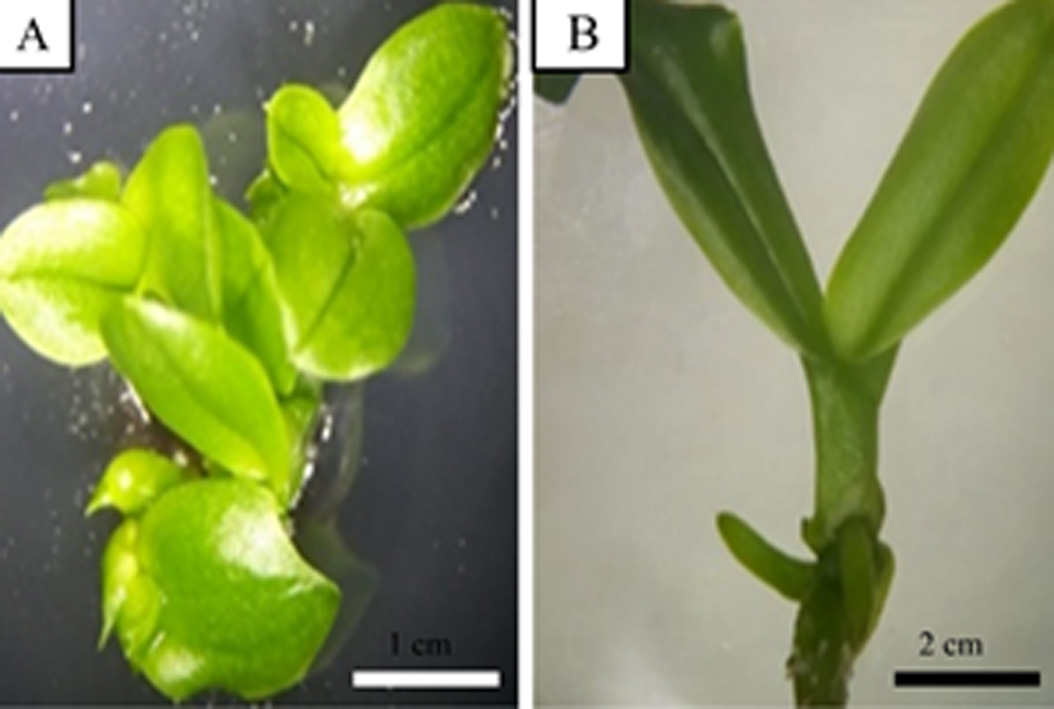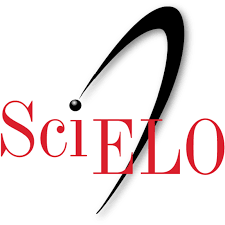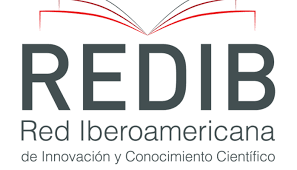Effect of organic complexes on micropropagation of Phalaenopsis var. Dudu
DOI:
https://doi.org/10.18387/polibotanica.60.15Keywords:
Phalaenopsis; propagation; Ulomoides dermestoides; antioxidantsAbstract
Phalaenopsis species, belonging to the Orchidaceae family, are popular ornamental plants worldwide due to their elegant appearance and long lifespan, making them a resource of great economic importance for the floral industry. Therefore, it is essential to develop efficient protocols for the micropropagation of both these species and the genus as a whole. Traditionally, the addition of auxins and cytokinins has been the method used to regulate the growth and development of plant tissues, although their use can be expensive. In this context, the aim of this work was to evaluate the effect of peanut beetle feces (HEM), coconut water (AC), and pulque (PUL) on the proliferation of protocorm-like bodies (PLBs) and on the regeneration of Phalaenopsis var. Dudú plants. Clusters of five PLBs were used as explants, with a trifactorial arrangement (5x2x2) that included the following levels: factor A with five levels (0, 2.5, 5.0, 7.5, and 10 g L-1 of HEM), factor B with two levels (0- and 100-mL L-1 AC), and factor C with two levels (0- and 10-mL L-1 PUL). The highest number of PLBs (22.2) was obtained in the treatment with 7.5 g L-1 of HEM and 100 mL L-1 of AC, while the highest number of regenerated plants (5.3) was achieved in the treatment without the addition of organic substitutes, followed by the treatment with 7.5 g L-1 of HEM and 100 mL L-1 of AC (3.7). These results suggest that the combination of peanut beetle feces and coconut water favors the proliferation of PLBs in Phalaenopsis var. Dudú.
References
Deloya, G. y Deloya, C. (2014). Sustancias producidas por el coleóptero Ulomoides dermestoides (Chevrolat, 1878) (Insecta: Coleoptera: Tenebrionidae): efecto antinflamatorio y citotóxico. Acta zoológico-mexicana, 30(3):655-661.
Chandra, L., Pathak, P., Rao, A., y Rajevan, P. (2014). Global Orchid Industry. In: Commercial Orchids. Sciendo Migration, 13-19.
Gnasekaran, P., Xavier, R., Uma, S., y Sreeramanan, S. (2010) A study on the use of organic additives on the protocorm like bodies (PLBs) growth of Phalaenopsis violacea orchid. J Phytol, 2(1): 029-033
Griesbach, R. (2002). Development of Phalaenopsis orchids for the mass-market. Trends in new crops and new uses, 458-465.
Huh, Y., Lee, J., Nam, S., Paek, K., y Suh, G.(2016). Improvement of asymbiotic seed germination and seedling development of Cypripedium macranthos Sw. with organic additives. J. Plant Biotechnol, 43, 138-45.
Ichihashi, S., e Islam, M. (1999) Effects of complex organic additives on callus growth in three orchid genera; Phalaenopsis, Doritaenopsis and Neofinetia. Soc Hortic Sci, 68(2): 269-274.
Khatun, K., Kumar, U., y Shafikur, M. (2020). Tissue culture of Phalaenopsis: present status and prospects. Journal of Advanced Biotechnology and Experimental Therapeutics, 3(3):273-285. https://doi.org/10.5455/jabet.2020.d135
Martínez, S., Arzate, A., González, M., García, H y De la Cruz, E. (2024). Antibacterial activity of silver nanoparticles biosynthesized from extracts of three species of Agave to inhibit Bacillus licheniformis. Polibotánica, 58: 149-157. DOI: 10.18387/polibotanica.58.10
Mendoza, D., Salgado, M., y Durant, L. (2013). Capacidad antioxidante de extractos metanólicos de cuerpo entero del escarabajo Ulomoides dermestoides. Revista Cubana de Investigaciones biomédicas,32(4): 402-410.
Menezes, L., Machado, M., Ballesta, P., Mora, F., Milaneze, M., y Mangolin, C. (2016). Suplementos orgánicos para el cultivo in vitro del híbrido Laeliocattleya (Orchidaceae). IDESIA. 34(1):47-54.
Moreno, S., Crescente, O., Herrera, B., Vicente, J., Muñoz, M., y Oliveros, M. (2019). Composición y actividad biológica de los extractos de Ulomoides dermestoides (Tenebrionidae) procesados bajo diferentes condiciones en Cumaná, estado Sucre. FacSaludUNEMI, 3(5):3-16.
Murdad, R., Sok, K., Khen, C., Abdul, M., Adbul, Z., y Ripin, R. (2006). High frequency multiplication of Phalaenopsis gigantea using bases protocorms technique. ScienceDirect, 73-79. Doi: 10.1016/j.scienta.2006.08.008
Nambiar, N., Tee, C., y Maziah, M. (2012). Effects of organic additives and different carbohydrate sources on proliferation of protocormlike bodies in “Dendrobium” Alya Pink. Plant Omics, 5(1), 10–18.
Piri, H., Pathak, P. y Bhanwra, R. (2013). Asymbiotic germination of immature embryos of a medicinally important epiphytic orchid Acampe papillosa (Lindl.) Lindl. Afr J Biotechnol, 12, 162-7.
Samala, S., y Thipwong, J. (2022). Influences of Organic Additives on Asymbiotic Seed Germination of Dendrobium cruentum Rchb. f. for In Vitro Micropropagation. Trends in Sciences, 20(3), 4181. https://doi.org/10.48048/tis.2023.4181
Tanaka, M. y Sakanishi, Y. (1977). Clonal propagation of Phalaenopsis by leaf tissue culture. American Orchid Society Bulletin, 46:733-737.
Thomas, T. y Michael, A. (2007). High-frequency plantlet regeneration and multiple shoot induction from cultured immature seeds of Rhynchostylis retusa Blume, an exquisite orchid. Plant Biotechnol. Rep, 1, 243-9.
Wida, E. y Hariyanto, S. (2020). Organic Compounds: Contents and Their Role in Improving Seed Germination and Protocorm Development in Orchids. International Journal of Agronomy, 1-12. https://doi.org/10.1155/2020/2795108
2795108
Zeng,S., Wu, K., Silva, J., Zhang, J., Chen, Z., Xia, N., y J Duan, J. (2012) Asymbiotic seed germination, seedling development and reintroduction of Paphiopedilum wardii Sumerh, an endangered terrestrial orchid. Sci Hortic, 138, 198-209.

Downloads
Published
License
Copyright (c) 2025 POLIBOTANICA

This work is licensed under a Creative Commons Attribution-NonCommercial-ShareAlike 4.0 International License.

Polibotánica by Departamento de Botánica de la Escuela Nacional de Ciencias Biológicas del Instituto Politécnico Nacional se distribuye bajo una Licencia Creative Commons Atribución-NoComercial-CompartirIgual 4.0 Internacional.



















